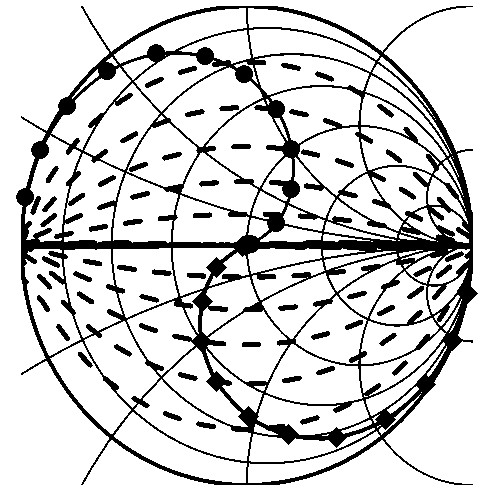
I will visit Virginia Tech on Monday March 13th to give an EM seminar on “Energy Flow in Reactive Fields” at 1:00PM in the Whittemore 654 conference room.
- Slides: https://prezi.com/f_2md1molwhp
Abstract: Energy Flow in Reactive Fields
Conventional wisdom treats radiation as a transverse kink in a field line and classifies the “near field” by where it appears: “near” a source. A closer examination of electromagnetic fundamentals reveals a different picture.
Electromagnetic waves propagate at the speed of light and comprise a balance of electric and magnetic energy. The free space impedance, 377 ohms, relates the electric and magnetic field intensities. When that balance is disturbed, there is an excess of electric or magnetic energy, and the energy slows down. In the limit where fields are purely static, the energy is at rest. By characterizing fields according to their impedance, we discover that “near,” or more properly, “reactive” fields exist all around us, and electromagnetic energy curves, bends, and behaves in counterintuitive ways.
These insights are crucial to understanding how radiation works – the transformation of bound electromagnetic energy into radiant energy. This talk considers radiation from an accelerating charge and from a dipole source to illustrate the fundamental point that the propagation of fields and the flow of energy behave differently, and each offers unique insights to how electromagnetic systems behave.
Finally this talk considers the application of reactive energy flow to understand not only the behavior of electrically-small antennas, but also the puzzle of two-slit interference in the context of quantum mechanics.




One thought on “My Virginia Tech Talk: Energy Flow in Reactive Fields”
Hi Hans,
Just discovered you, on twitter while searching for something relating to computer GPU particles.
I am a fellow ham, N4YPE. Las Vegas.
I watched your lecture about fields on youtube and read the paper. I had a hunch that it would take a radio guy to discover the deeper aspects to fields, and Wow, so clear and to the point on such a difficult subject.
I suspect your work could be important towards the development of a new kind of computer using fields instead of Turing logic.
I am interested in this topic from the perspective of finding workable models for the precursors of cognition or at least a step in AI.
So far, the most interesting insight I ran into was the idea that energy likes to spread out, as does life. If you put pressurized gas in a container, it will leave in a rush when you pop the lid off. Boltzmann. Electrical analogies, etc. Capacitor discharging, antenna transmitting, etc.
One thing I noticed during my computer simulations, is that starting with a simple model of particles being accelerated by gradients (attracted or repelled or somewhere in-between), you can cascade this principle to make a meta version, where the particles, making a combined field themselves, which then can again be sniffed by yet other particles or the original particles, and thus closing a feedback loop which gives rise to higher behaviors. Some might call it intelligence.
I will be posting graphical examples on the internet at some point once I polish my work and learn a few more coding tricks.
I think you are really on to something, and by the way., it is not the first time I have heard this idea that there is more to the electromagnetic story. Some folks were adamant that Maxwell had overly formalized the model and that Ampere had more right from the beginning. To me honest, most of the difference is over my head, ha. But it had to do more with the choice of method used (negatively influenced by formalism), and the consequential result, rather than merely the result.
I wonder when you speak of energy flowing, if that too has more layers of onion. It seems unable to explain itself, and begs for yet a higher principle. As to if thermodynamics is that higher principle, maybe but it seems that that too was such a dogma: the scientist could not explain his own existence with the 2nd law only. Life is anti-entropic, and cognition even more so.
I am curious to see how this theory can be exercised on the computer, and if a model of the atom can be derived explaining how a bunch of fields can tie a knot to hold an atom together.
I am searching for ways to model interacting fields to generate new primitives for AI and/or analog computation. The nice thing about polarized fields is that that tend to have endurance against noise, perhaps a way to skip the noise problem in analog computing: by the time noise would have accumulated to a ruinous extent, the computation has already moved on in a sense. But now I am rambling.
I look forward to buying your books and gaining deeper insight.